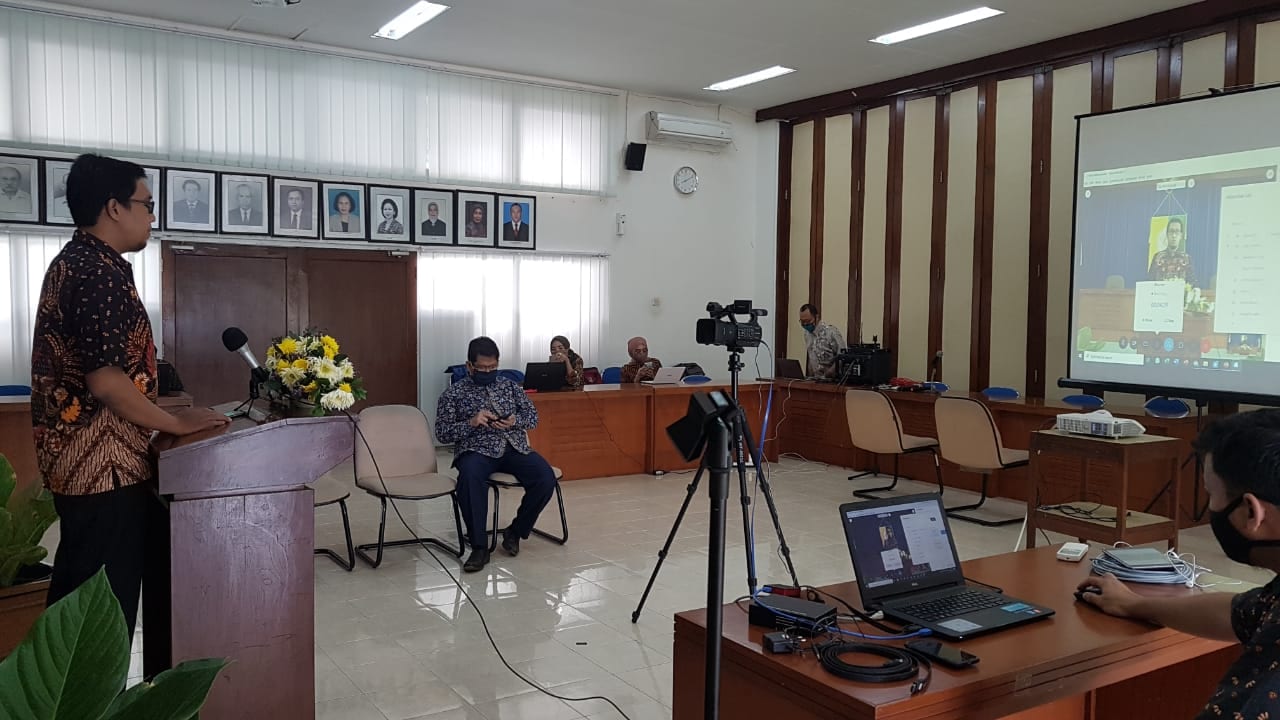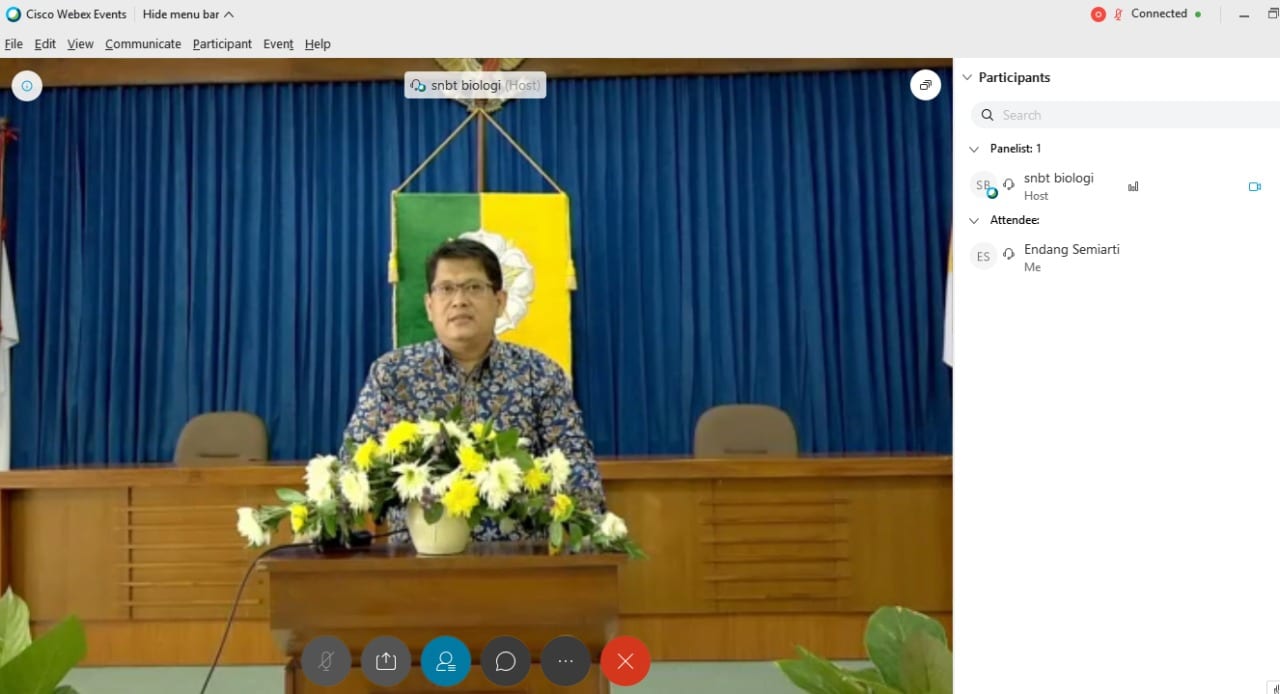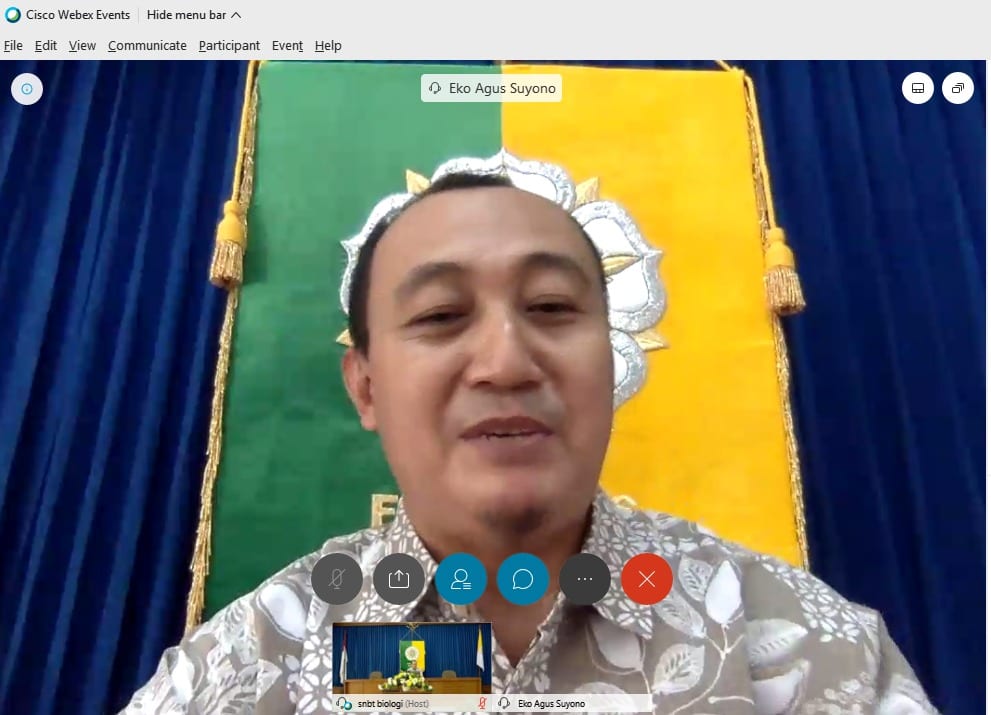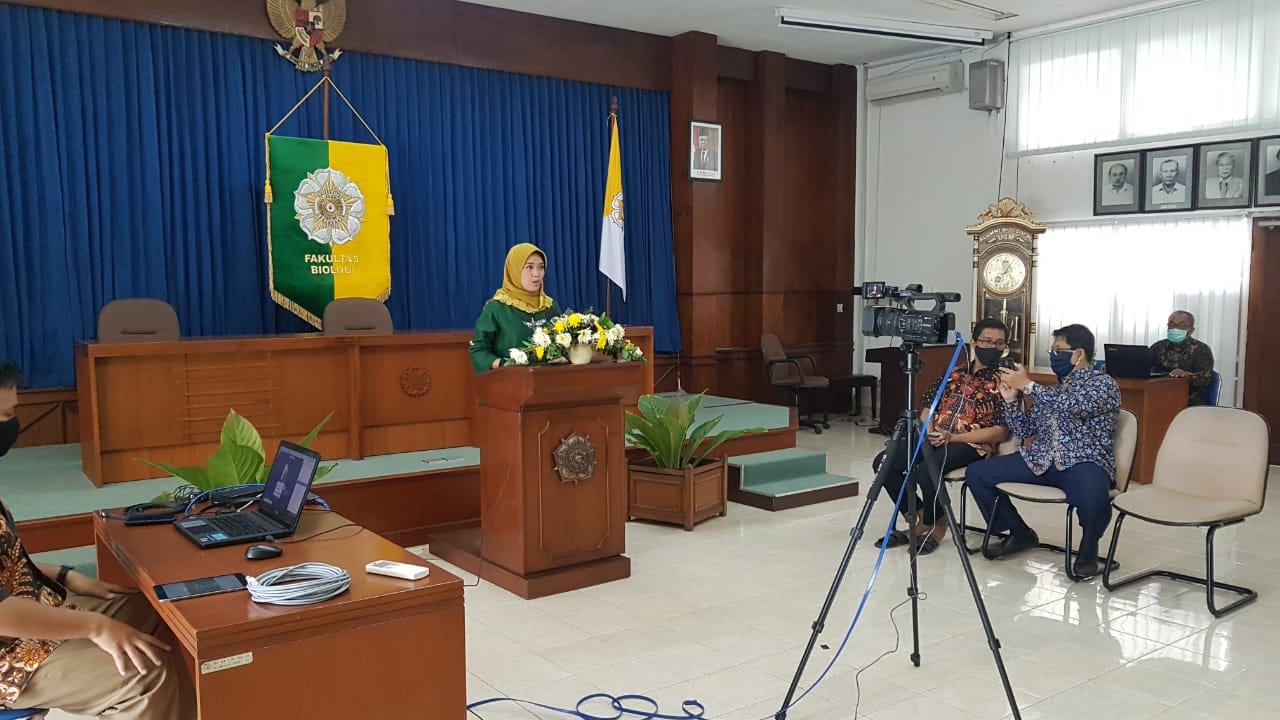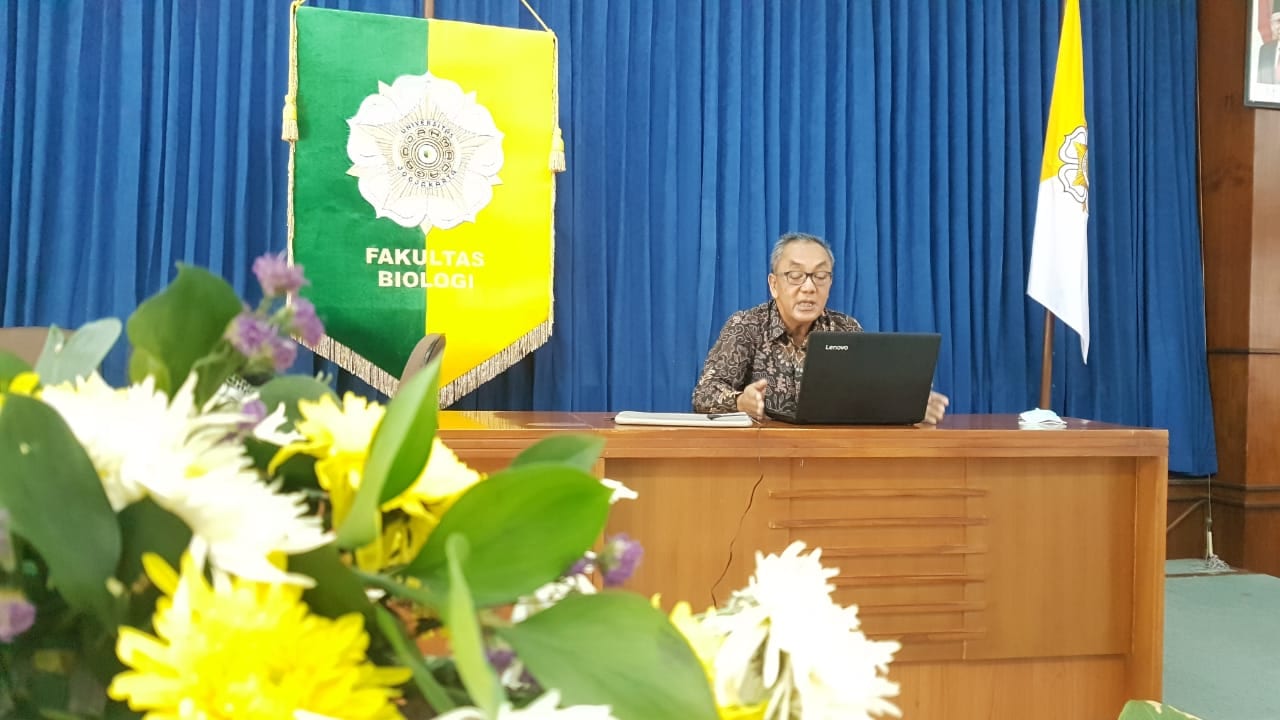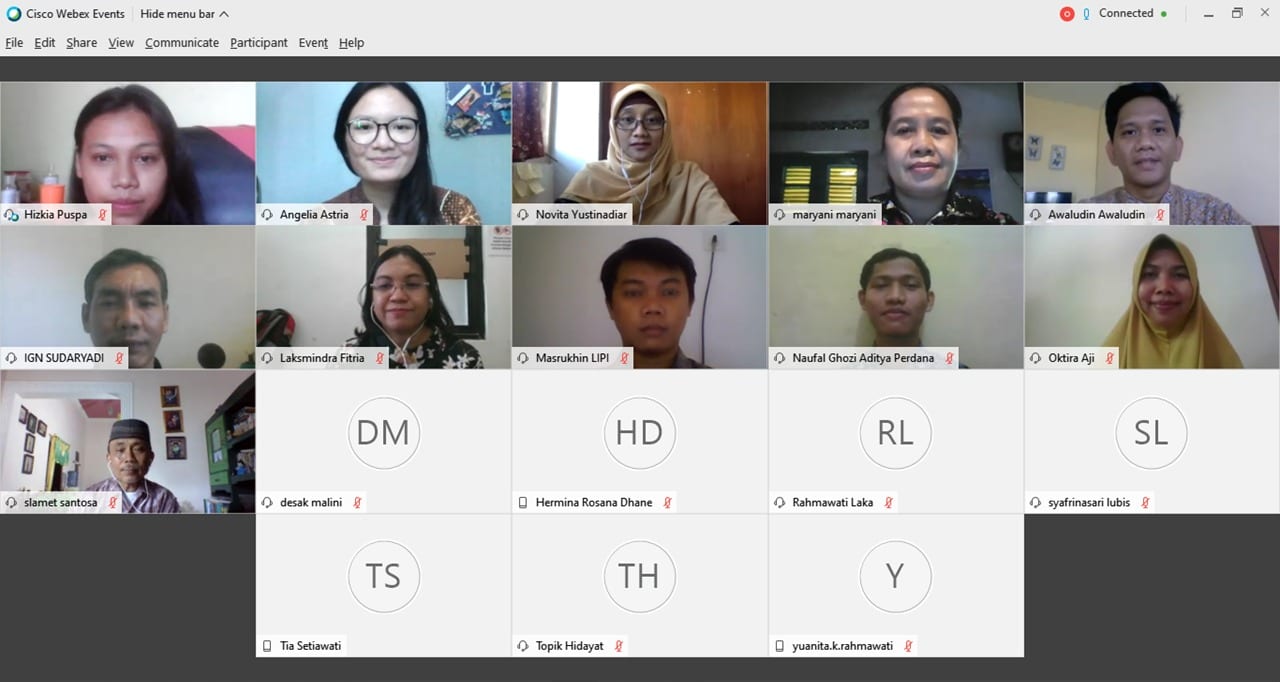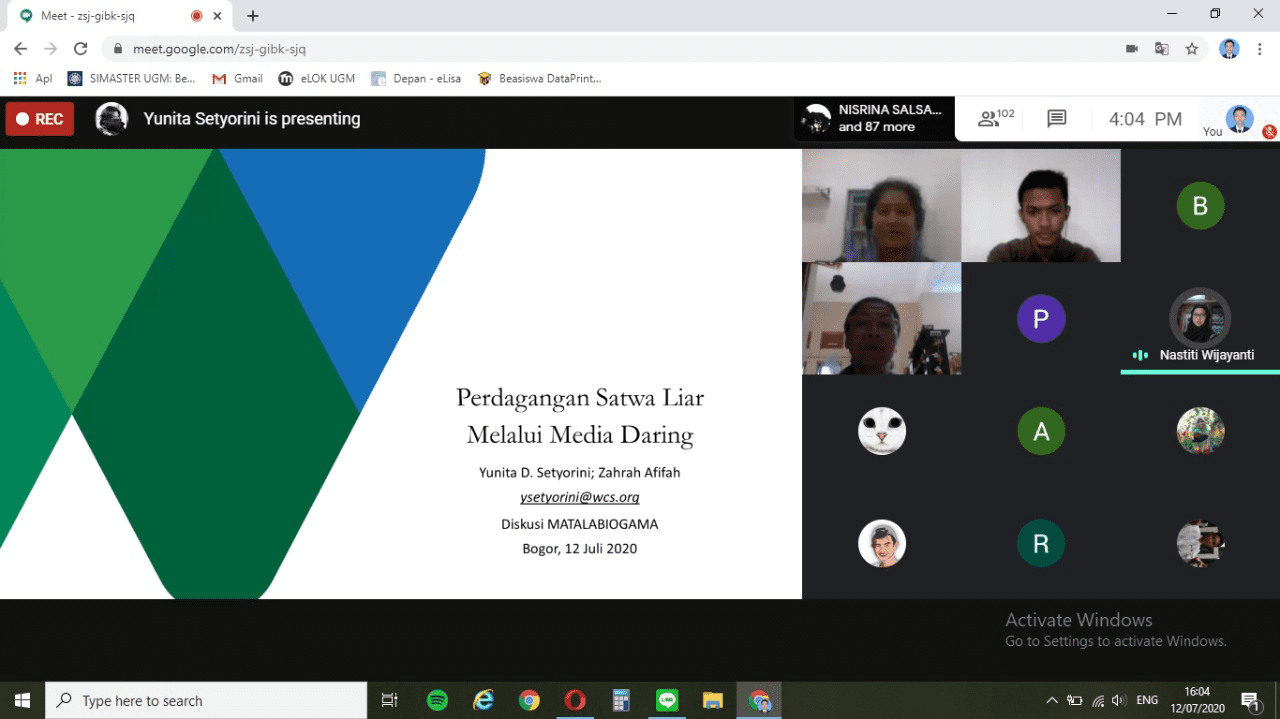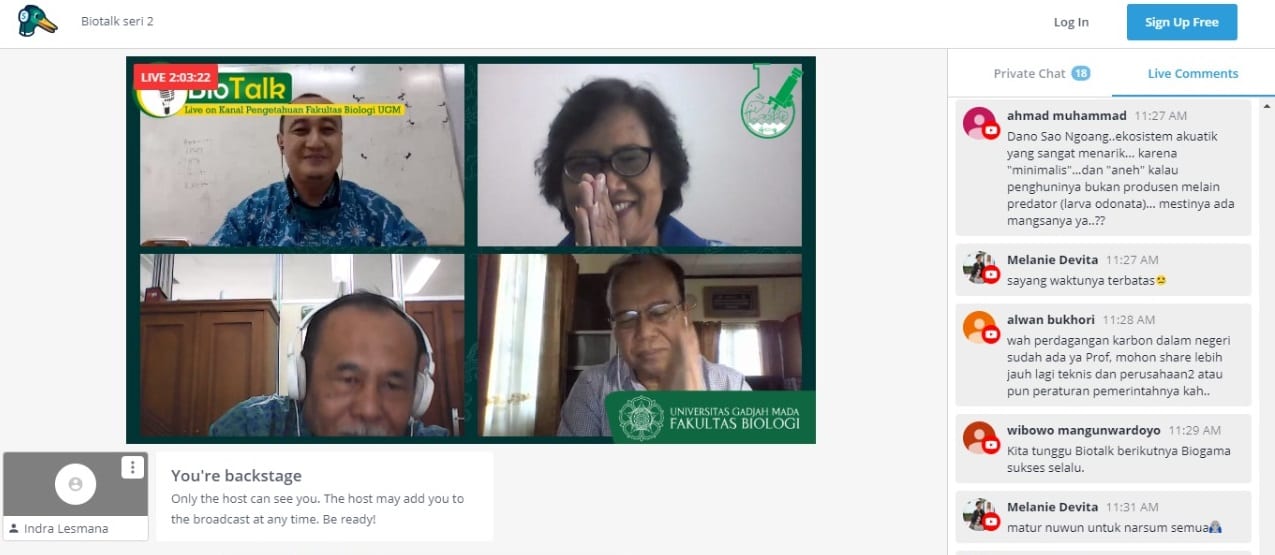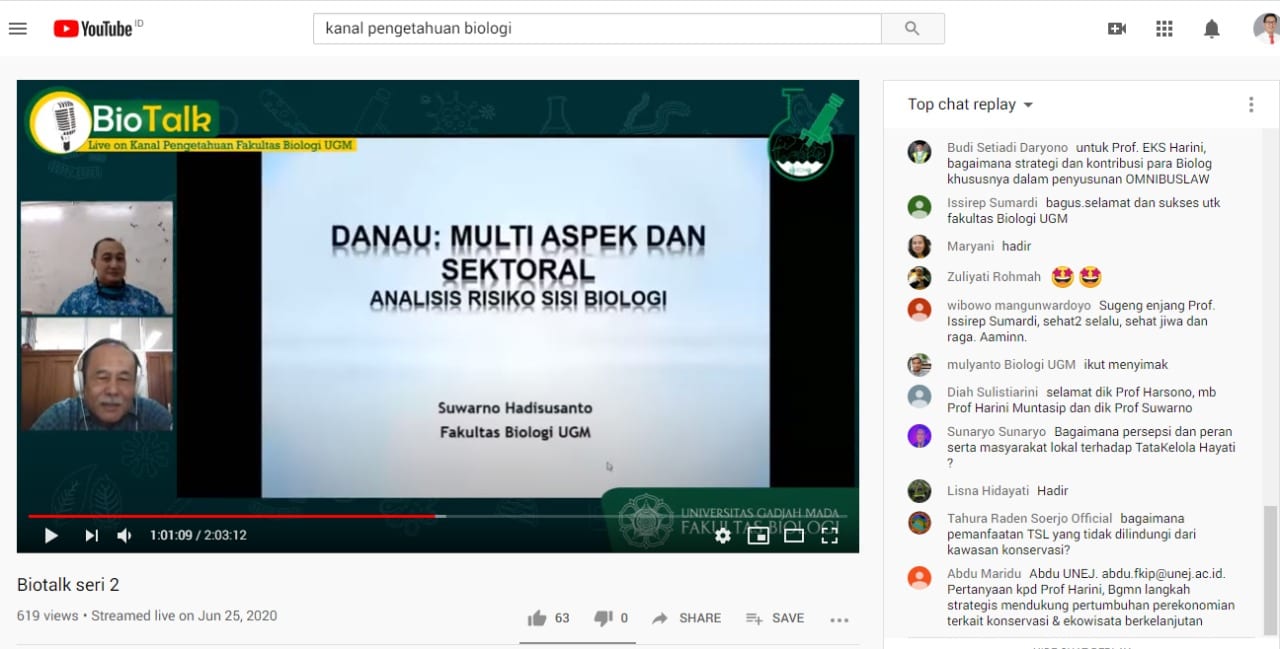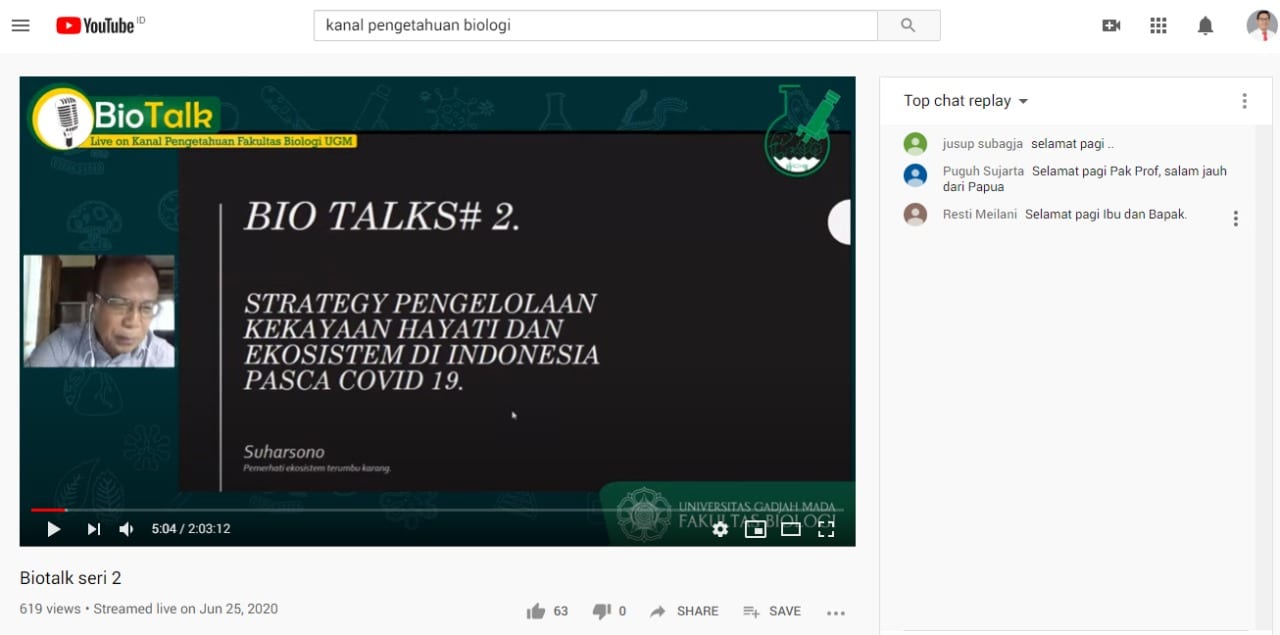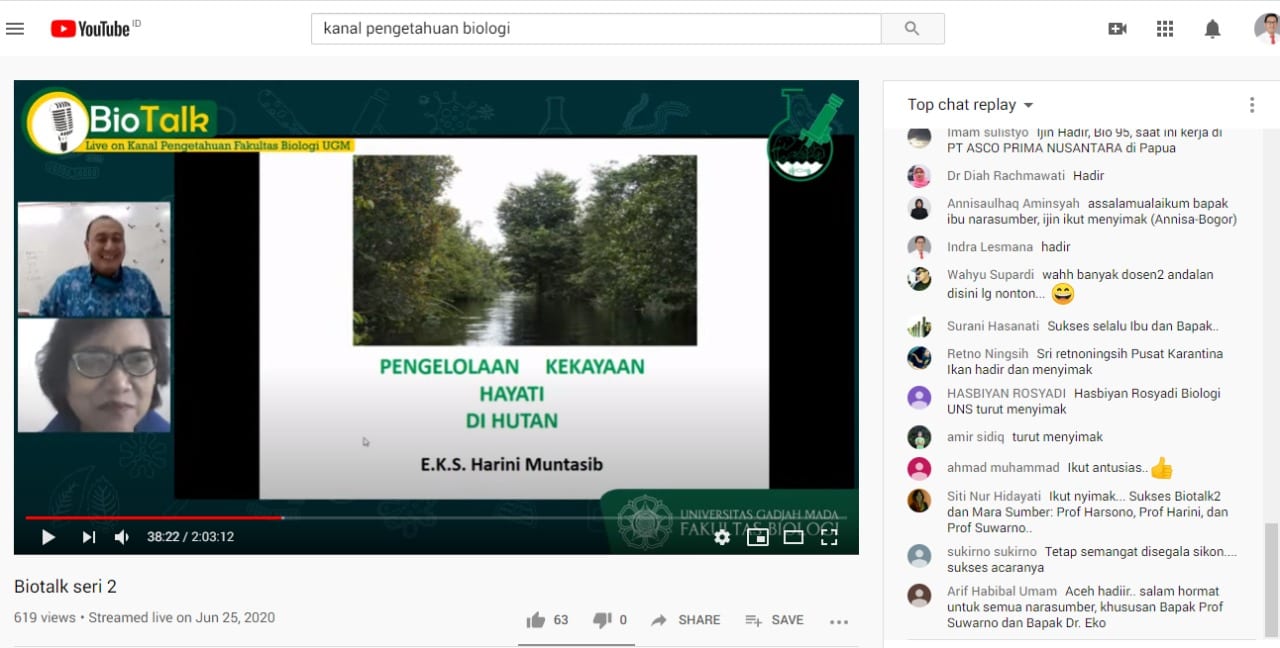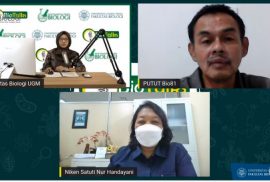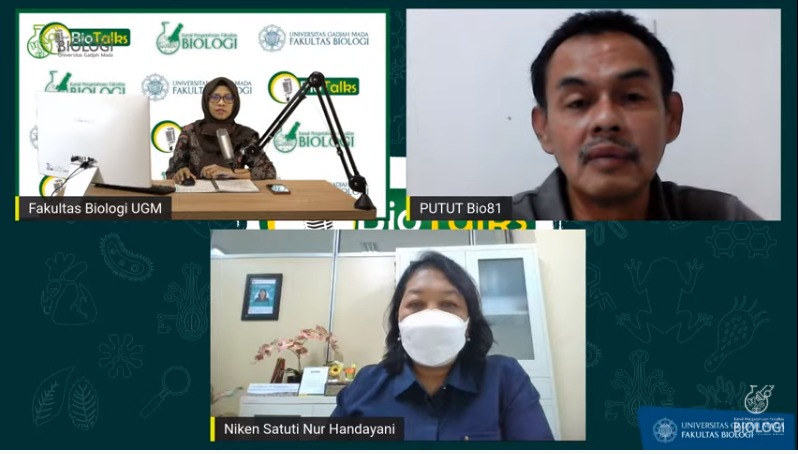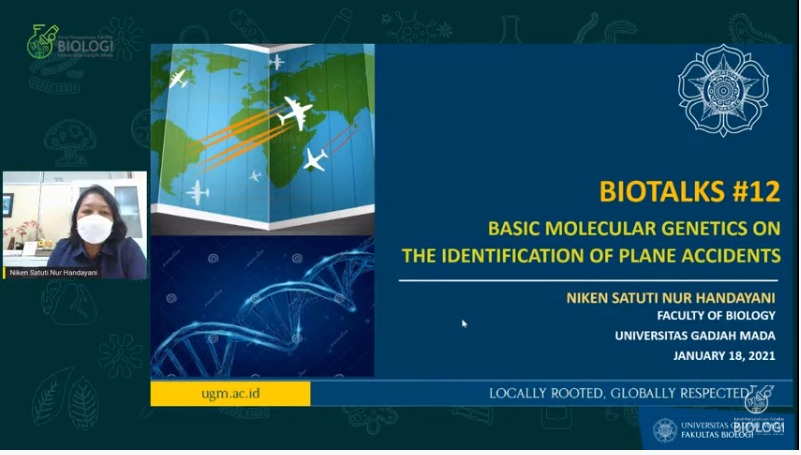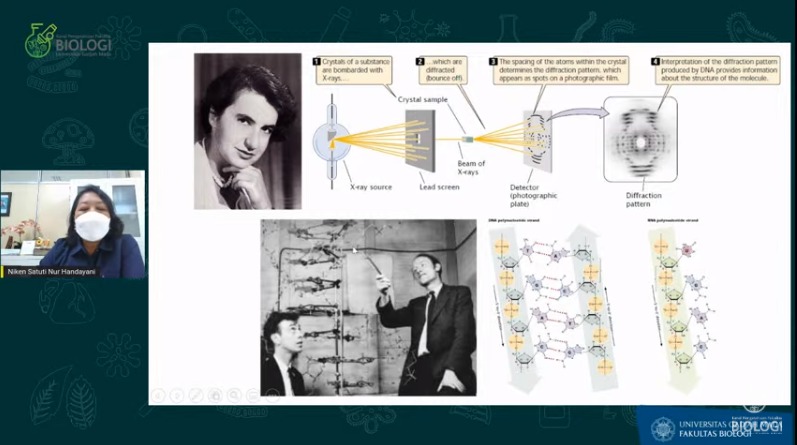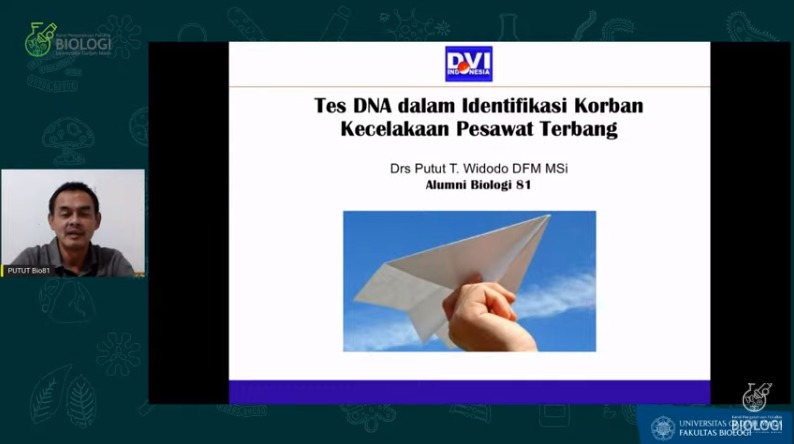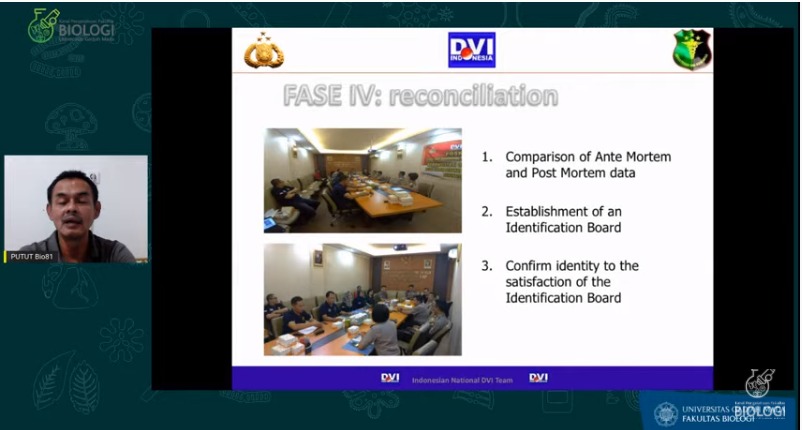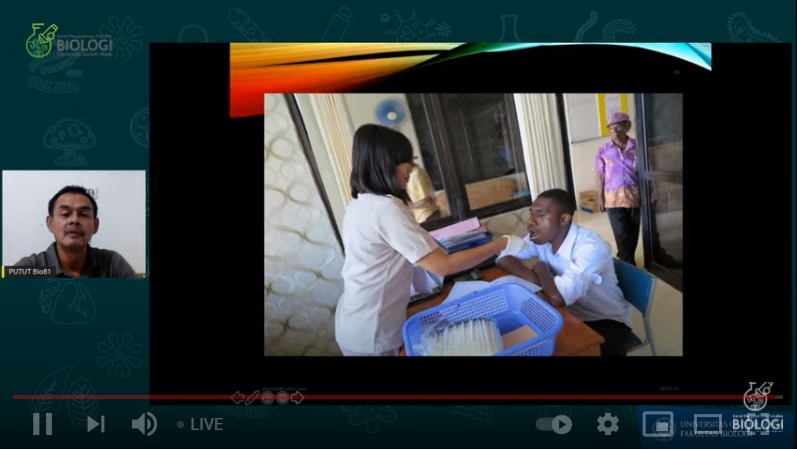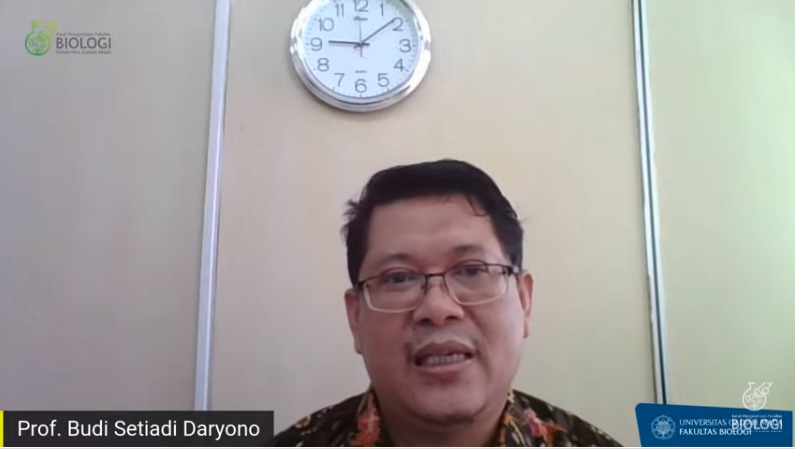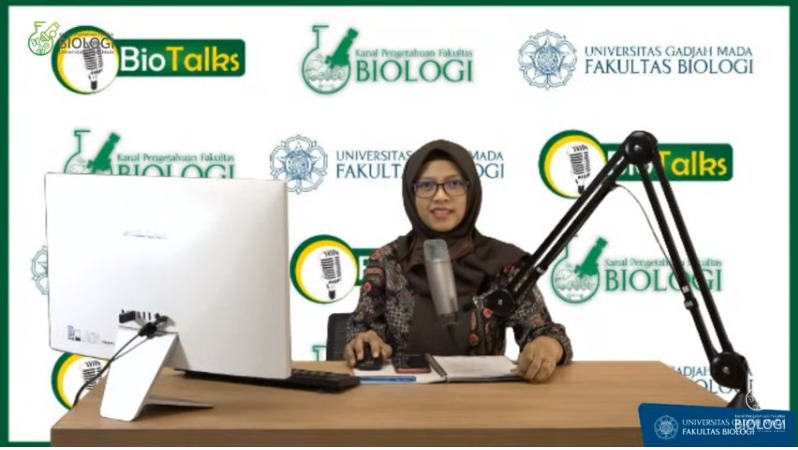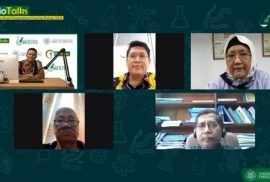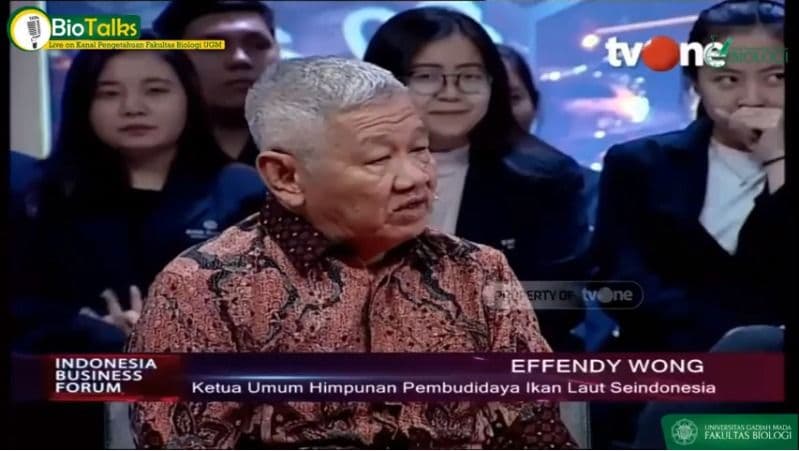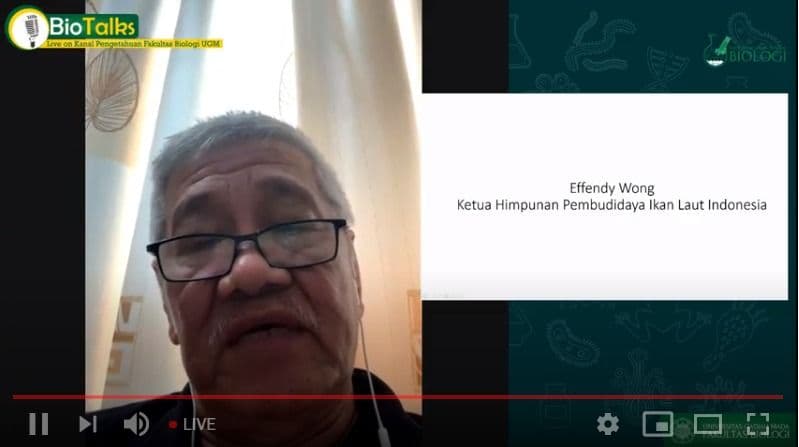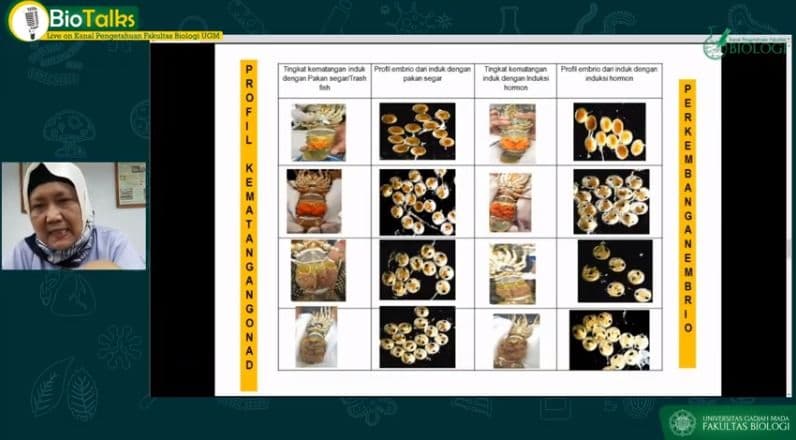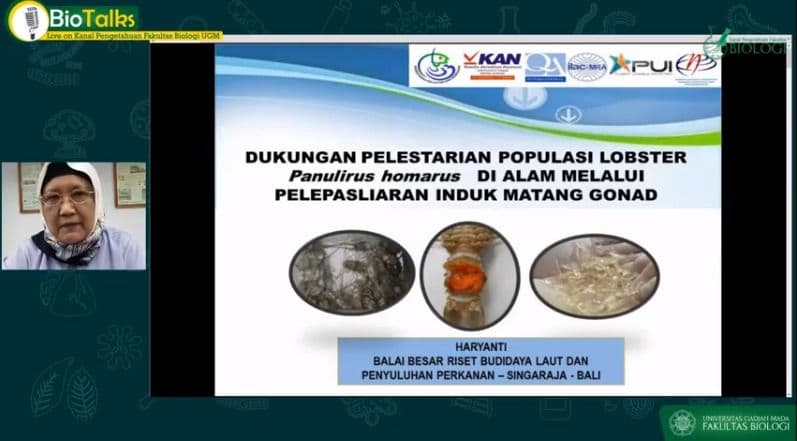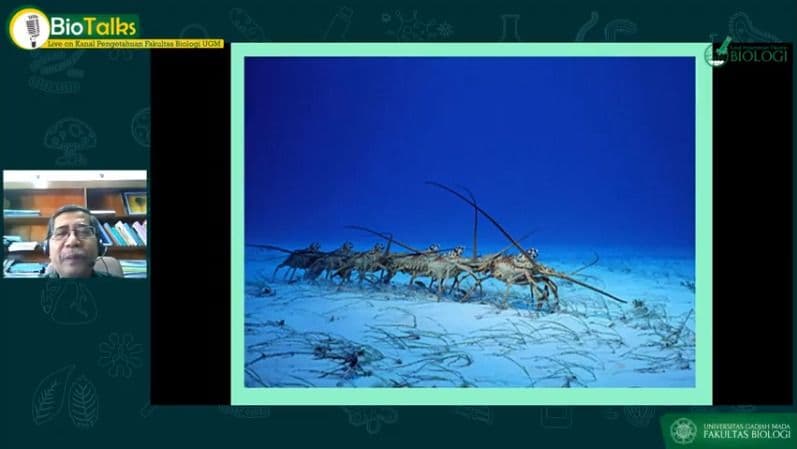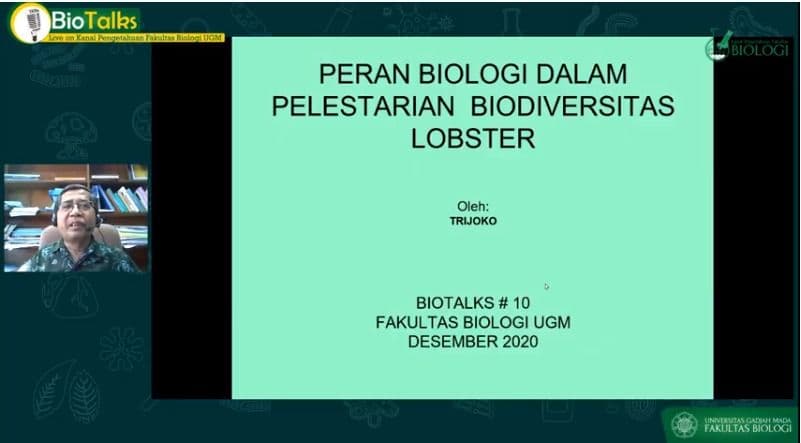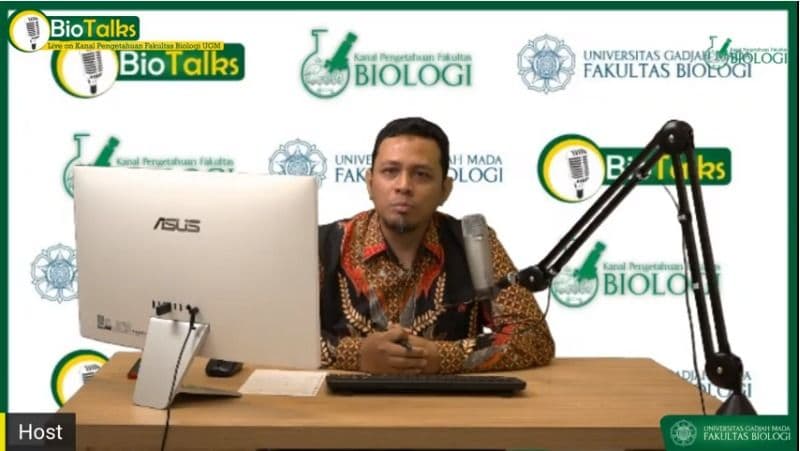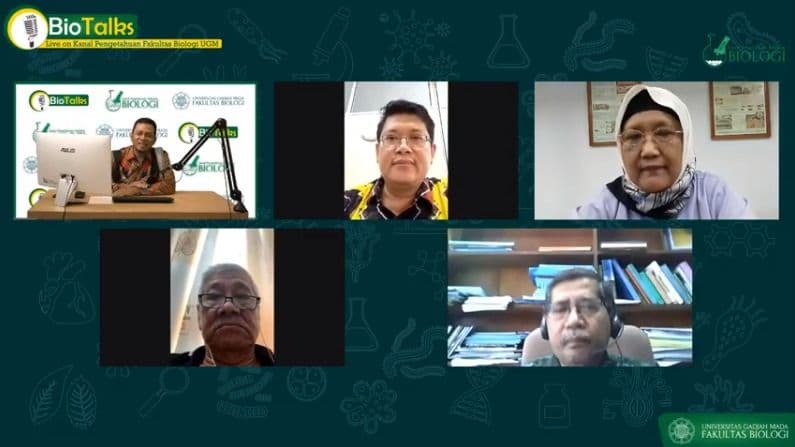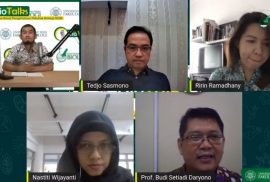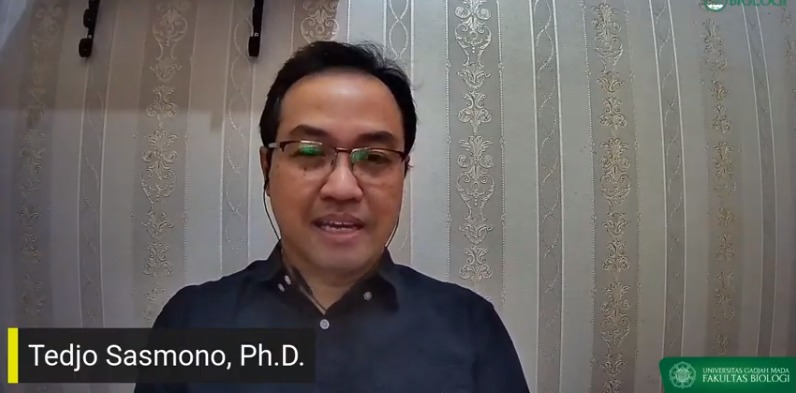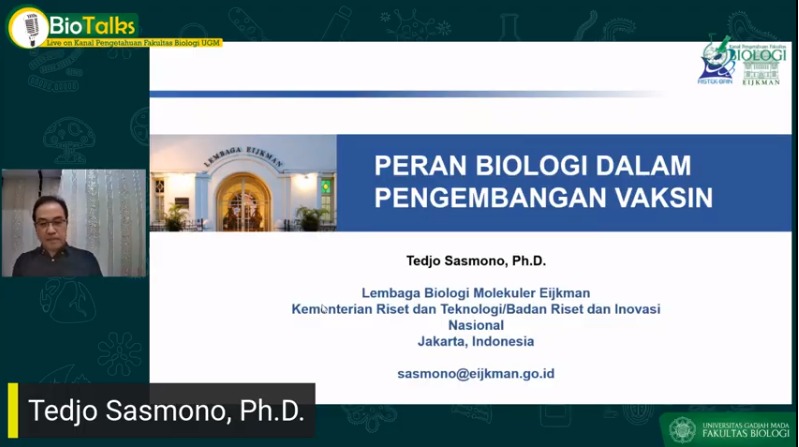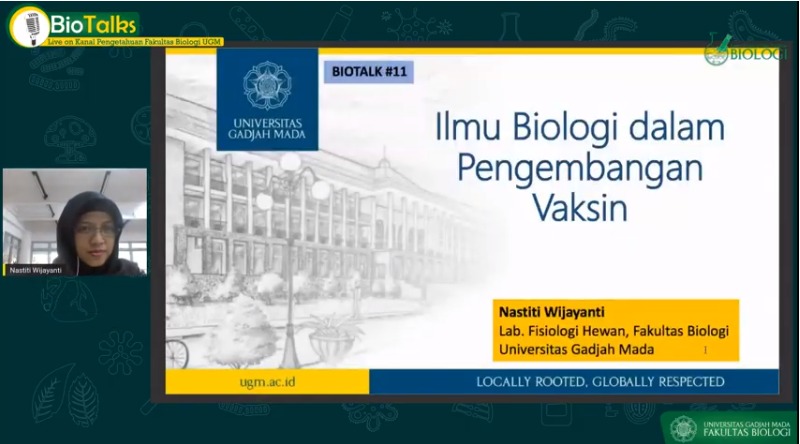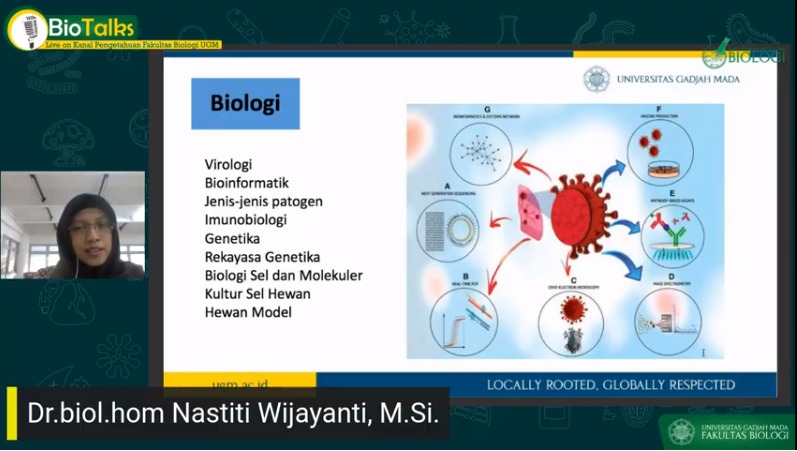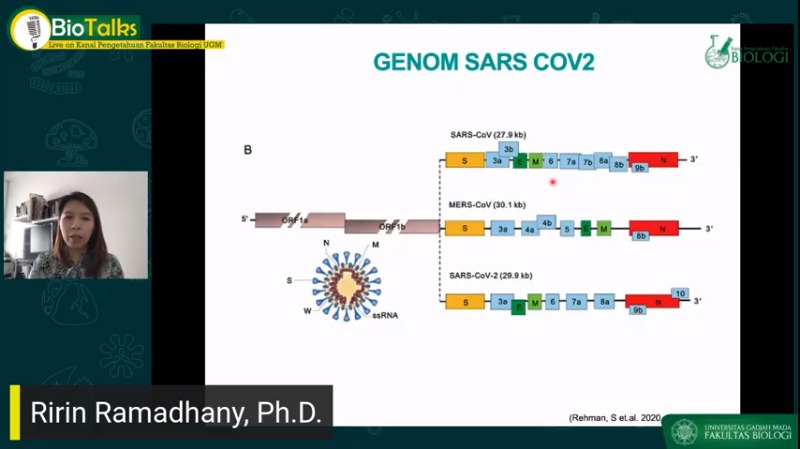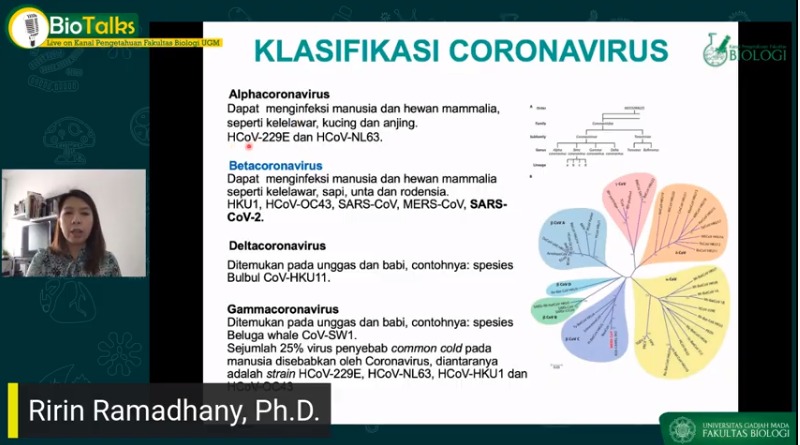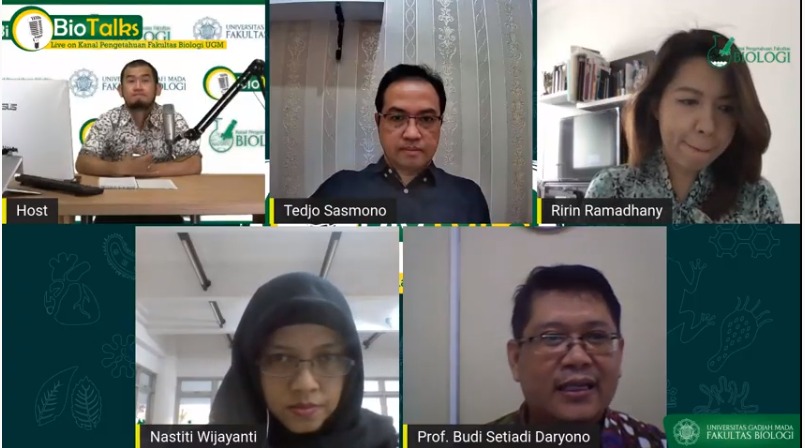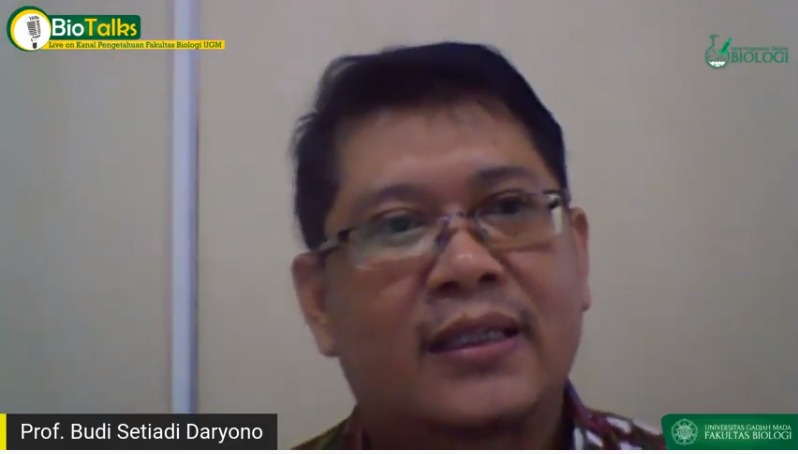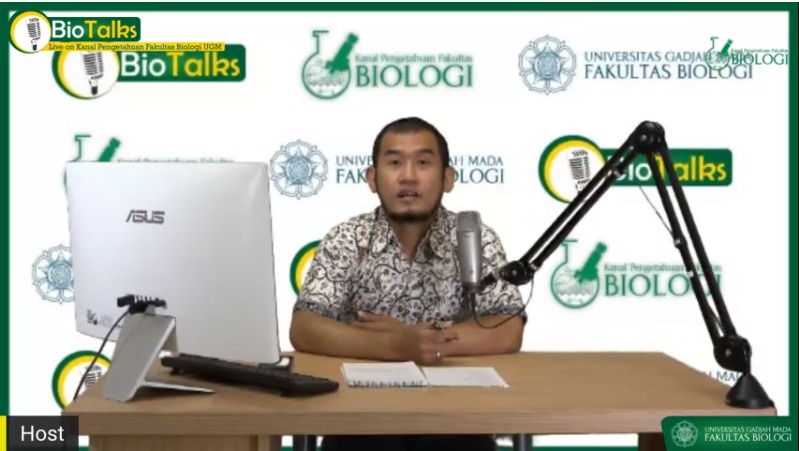The National Seminar on Tropical Biology (SNBT) is an annual event organized by the Faculty of Biology. The 4th SNBT this year was held on Saturday, July 25, 2020, and conducted online via the Cisco Webex application. The seminar focuses on discussing: “Big Data Utilization in the management of Indonesia Biodiversity in the Digital Era.” It was attended by 70 oral presenters, 17 poster presenters, and 63 participants from various Indonesia regions. The invited speakers were Dr. Thomas Barano, an expert conservation scientist from WWF Indonesia who presented: “Using Big Data to Strengthen Indonesia’s Biodiversity Policy”; Prof. Dr. Roshicon Ubaidillah, M. Phill, from the Biology Research Center of LIPI, who presented: “Integrity and Accessibility of Big Data on Indonesian Biodiversity: Challenges and Opportunities”; and Prof. Dr. Purnomo, M.S., Professor of the Faculty of Biology discussing about: “The Big Data of Plant Diversity from Taxonomic Perspectives.” There were six sub-topics, including: Exploration of Tropical Biodiversity, Bioinformatics, Bio-prospection, Tropical Bio-functionality, The Use of Big Data, and Digital Applications for Biodiversity Research and Education. All selected manuscripts will be published in national journals and international journals accredited by Sinta 2, including JTBB, Al Kauniyah Journal, Biogenesis Journal, Biodiversity Journal, and LIPI Biology News Journal. In his opening speech, Prof. Dr. Budi Setiadi Daryono, as Dean of the Faculty of Biology UGM, hopes that this event can help participants to study, utilize and develop, and preserve biodiversity in Indonesia.
2021
The Faculty of Biology UGM organized the second Biotalk, a talk show discussing biology-related issues from a multi-sector perspective. The second Biotalk was held on Thursday, June 25, 2020 inviting distinguished speakers: Prof. Dr. Suharsono (LIPI Coral Reef Expert / UGM Biology Alumni 1974), Prof. Dr. E.K.S Harini Muntasib M.S. (Faculty of Forestry IPB / UGM Biology Alumni 1973), and Prof. Dr. Suwarno Hadisusanto (Faculty of Biology UGM / Alumni of Biology UGM 1975).
Prof. Dr. Suharsono discussed the strategy of managing biodiversity and marine ecosystems. On a positive note, in his opinion, the Covid19 pandemic reduces the exploitation of natural resources, allowing the ecosystem to recover. The second speaker, Prof. Dr. EX. Harini Muntasid, M.S., presented about forest management, proposing that the Covid19 pandemic might occur due to the increased interaction between humans and wildlife, thus facilitating the spread of the unknown virus. Prof. Harini also suggested the importance of a balanced approach between economy and socio-culture, so that the community can feel the benefit and responsibility in preserving the environment. Lastly, Prof. Dr. Suwarno Hadisusanto talked about “Lake: multi-sectoral aspects and risk analysis from the biological perspective.” In his presentation, he elaborated about the development of the lake’s function as a reservoir to prevent flooding, irrigation, fisheries, aquaculture, hydropower, and tourism. The next biotalk will discuss about bio-forensic, which is expected to be a source of information that help to enlighten and educate the public.
The National Police’s Disaster Victim Identification (DVI) team has identified 29 victims of the Sriwijaya Air SJ 182 tragedy. Until now, the DVI Team has received approximately 351 DNA samples from the victims to be identified. In response, the Faculty of Biology organized the 12th Biotalks discussing: Application of Molecular Genetics in the Identification of Airplane Accident Victims. It was held on Monday, January 18, 2021, inviting two speakers; Kombes. (Pur) Drs. Putut Tjahjo Widodo, DFM, M.Si. (Ex. Head of DNA Lab. PUSDOKKES POLRI; Biology Alumni 1981), Dr. Niken Satuti Nur Handayani, M.Sc. (Genetics Researcher; Biology Alumni 1984) and moderated by Dr.biol.hom. Nastiti Wijayanti, M.Si. (Immunobiologist; Biology Alumni 1988).
The first speaker, Dr. Niken Satuti Nur Handayani, M.Sc., explained the history of DNA discovery. DNA is the genetic material that can be used to identify victims of airplane crashes. DNA analysis of plane crash victims can use DNA samples from muscle tissue, bone tissue, or molars. The second speaker, Kombes. (Pur) Drs. Putut Tjahjo Widodo, DFM, M.Si., explained that samples used in the forensic field are fingerprints, odontology, DNA, and medical data. The identification process of accident victims is a collaborative effort of various agencies: police, medicine, researchers, and TNI.
Vietnam is considered successful in farming lobster for commercial needs. Therefore, recently, rumors of re-opening the lobster seed exports to Vietnam were circulating. In response, the Faculty of Biology organized the 10th biotalks discussing: The Role of Biology in the Conservation of Lobster Biodiversity. It was held on Thursday, December 10, 2020, with speakers: Drs. Trijoko, M.Si. (Expert on Animal Systematics and Carcinology, Faculty of Biology UGM), Effendy Wong (Chair of the Indonesian Marine Fish Cultivators Association), Prof. Dr. Haryanti, M.S. (Main Expert Researcher of the Center for Marine Cultivation Research and Fisheries Extension; UGM Alumni F.Biology 1976) and moderated by Rury Eprilurahman, S.Si, M.Sc.
The first speaker, Drs. Trijoko, M.Si., presented on the Role of Biology in the Conservation of Lobster Cultivation in Indonesia. Lobster exports have been steadily increasing in recent years; however, it results in side effects of environmental damage. Efforts should be made to prevent environmental damage, for example, the development of sea farming. Also, it is necessary to conduct a study on natural larvae feed and nurseries. In addition, Prof. Dr. Haryanti, M.S., as the second speaker, discussed the preservation of lobster populations in nature. She mentioned that, to prevent overexploitation, it is necessary to restore lobster resources. For example, it can be done by producing adults with mature gonads and release them into the wild. The last speaker, Effendy Wong, discussed the conditions of lobsters in the wild and the potential of lobster seeds in Indonesia. He believed that Indonesia, with its abundant seed availability, should develop lobster cultivation on its own.
From the first case of Covid-19, one year has passed. The pandemic is still not over, but it is starting to see a bright spot with vaccines being developed by researchers worldwide. Vaccine distribution was ongoing, and suddenly there was news that the Sars-Cov-2 virus was mutating and causing concern around the world. Vaccines are the main hope for ending the pandemic, so what is the role of the biologist? In response, the Faculty of Biology organized the 11th Biotalks, with the theme: Mutation of SARS-CoV-2 and the Role of Biology in Vaccine Development in Indonesia. It was held on Wednesday, December 30, 2020, inviting three speakers: Dr.biol.hom. Nastiti Wijayanti, M.Si. (Immunobiologist; Biology Alumni 1988), Tedjo Sasmono, Ph.D. (Eijkman Institute Molecular Biology Researcher; Biology Alumni 1989), Ririn Ramadhany, Ph.D. (Virology researcher; Biology Alumni 2002) and moderated by Fajar Sofyantoro, Ph.D.
The first speaker, Dr.biol.hom. Nastiti Wijayanti, M.Si. presenting a lecture on Biological Sciences in Vaccine Development. Vaccines can be developed from various platforms: synthetic peptides, RNA, DNA, recombinants, virus-like particles, etc. He explained that the manufacture and development of this vaccine is a work that takes a long time and involves many people; therefore, it needs synergy from all parties. Ririn Ramadhany, Ph.D., as the second speaker, discussed virus mutations and the role of biology in vaccine development. The Sars Cov-2 virus is rapidly undergoing genetic mutations, but it is still unknown what impact this will have on the vaccine being developed. The last speaker, Tedjo Sasmono, Ph.D., emphasized the importance of understanding basic science when studying S1 at the Faculty of Biology. Also, because of the high level of urgency, development of Covid-19 vaccine can be accelerated to around six months. It is proof that science is always developing and useful in anticipating the emergence of a pandemic.


